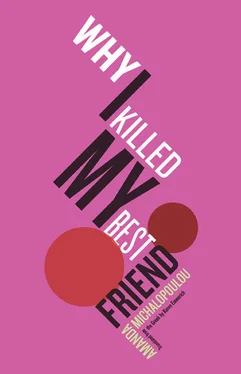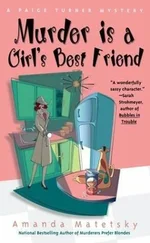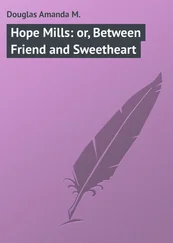He found me.
I wonder how fast a person can buy a ticket for New York.
PROTESTING THE SYSTEM
With slogans and. . laundry hundreds occupy the Attic Highway
“This is not a protest. I repeat: This is not a protest. These are artists and students. Over.” The message being broadcast over the walkie-talkies in patrol cars yesterday at the height of the demonstration on the Attic Highway wasn’t entirely correct. Artists, students, and workers flooded the highway near the Sorou exit in Marousi, carrying colorful banners with slogans such as “The streets belong to us, not to the cars,” and, “Resistance is the secret to happiness.” Alongside them marched some of the rowdier action groups, such as the infamous Bears, who lent a carnivalesque tone to the protests, wearing furry masks and banging on pots and pans. Their goal was to impede the work crews that had come to bulldoze the remaining residences in the area — most of them illegally built shacks.
For the demonstrators, however, what matters isn’t so much zoning laws as the symbolism the highway encapsulates, at least in their view: “In the name of progress, modernization and the Olympic ideal, the average Greek citizen has been led to believe that the swift Europeanization of his daily life, in the service of rabid profit-seeking, is the only way to proceed.” These are the words of twenty-year-old mass media student Irini Mantoglou, who is helping to construct a tunnel through the shared walls of the shacks that will unite the individual dwellings and facilitate communication among demonstrators.
Asked why they’re destroying the very buildings they are fighting to save, the demonstrators reply, “This isn’t destruction, it’s a return to an older form of neighborliness, of mutual support and interdependence that we’ve shut out of our lives in the name of parliamentary democracy and political representation. We refuse to continue to leave our fate in the hands of politicians who might as well be investment bankers, industrialists, or corporate lawyers.”
At present several hundred demonstrators and spectators have gathered at the site of the protest. At night they throw impromptu parties with loud music, and in the morning the street is transformed into a “neighborhood” with laundry hung out to dry. The occupation is raising serious concerns in the administration, largely because of how rapidly it has grown in the past twenty-four hours, and the attention it has drawn from ordinary citizens and mass media alike.
Dimos Hatzidis
The News
•
OUTRAGE ON THE ATTIC HIGHWAY
It’s an outrage! A few hundred anarchists have once again managed to wreak havoc on the law-abiding citizenry. Where’s the state? Where’s our police force? Hippies, remnants of days gone by, dazed-and-confused kids like the ones we see roaming around Exarheia, have disrupted our lives by hanging laundry out in front of houses along the Attic Highway, painted with ridiculous slogans inviting people to take part in their “anti-establishment celebration.” My question is: Don’t these children have parents? If not, isn’t our police force capable of dispersing them? Does the footage we’ve been seeing on television project the image of a civilized country? Bulldozers and digging machines at a standstill, lined up in front of youths flailing around to the sounds of rave music and the banging of pots and pans?
We say we want to stamp out terrorism. Then why don’t we start with these small, everyday instances of terrorism perpetrated by a ragtag army of spoiled brats? Why does our society, at a moment of prosperity, continue to put up with this sort of false revolutionary rhetoric? Perhaps in doing so — all in the name of protecting individual liberties and freedom of expression — it actually fosters the development of a more widespread and dangerous terrorism, one born of the collective, wide-spread hatred of the wealthy, the powerful, the American, the police officer, the system?
From the column “In Athens” by Emilios Laspas
The Free Press
•
ABANDONED STAGE SETS
As the days pass, the Attic Highway is looking more and more like a stage-set for utopia, a microcosm of liberated ecological culture that isn’t aiming to please us, coming to us only as an outlandish spot on the nightly news. And really, what have we done to deserve a simple, honest life? What basic values did we ever protect?
Dragging furniture out of houses, hanging old ladies’ blankets out to air on the wire fencing of the work site, fixing coffee and sweets for the last remaining inhabitants of the area, who will inevitably see their homes destroyed in the name of progress, the students occupying the Attic Highway are creating a new installation, a new piece of performance art with every day that passes. A life installation, life as installation, along the lines of what the Luddites did in the nineteenth century when they conducted raids on factories, dressed as women — actions later imitated by the Paris Commune and then again in May 1968. It’s the kind of piece we admire in international biennales yet fear won’t ever have any real effect, since the theatrical, performative message of such works is ultimately undeliverable when presented in a taxidermied, museum-friendly form.
In 1970 the artist Gordon Matta Clark bored a hole through a house and Walter De Maria filled a room with dirt; more recently, Rachel Whiteread created a concrete replica of a condemned Victorian house in situ in East London. The young people on the Attic Highway are digging a cylindrical tunnel to connect the shared walls of the houses slated for destruction. In my opinion, it’s an important gesture. It reminds us of how much we’ve lost, and how much more we’re willing to lose, in the name of progress, of consumption, of that hotly desired “privacy” that gets packaged and sold as a luxury item, yet actually prevents us from living together, united.
“The street is a place for us to live, eat, talk, sleep,” these young people say. “The street has a history of its own,” people of our generation used to sing at anti-dictatorship protests in the ’70s. But who remembers that slogan today? The street has become an abandoned stage-set that we hurry across without the least twinge of emotion, on our way somewhere else, alienated from our own footfalls, from the urgent situation of the present moment. Public squares have become sites for the deafening hubbub of festivals organized by city officials, supposedly “for the people.” But when the festival is spontaneous and improvised, decentralized and unpredictable, then it becomes an annoyance. A danger, even. The images of riot police standing by, of bulldozers lined up face to face with the bonfires of the young people’s jubilant celebration brings to mind moments in this country’s past that we simply don’t want to relive.
Op-ed column by Gerasimus Pantazis,
Professor of Sociology at Panteion University
The Daily Post
•
TRAGEDY ON THE ATTIC HIGHWAY
Thirty-five-year-old mother fights for her life
It was as if there were a war on. Tear gas everywhere, a battle scene. At the height of the clashes on the Attic Highway, at one in the morning, a few policemen fired shots in the air to disperse the crowd. One bullet, which seems to have gone astray, ended up in the temple of the unlucky Anna Horn, an artist who played an active role in organizing the demonstrations, and the mother of a six-year-old girl. She was rushed by ambulance to a hospital in Kifisia, where doctors have been struggling to keep her alive. The next twenty-four hours, they say, will be critical. The wounded woman is the wife of successful architect Aristomenis Malouhos, known for his office complexes along Kifisias Avenue, and the daughter of well-known philosopher Stamatis Horn, who lived and worked in Paris during and after the dictatorship.
Читать дальше












